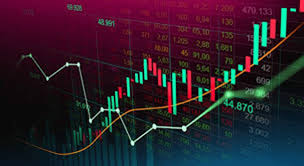
Understanding Leverage in Forex Trading: A Comprehensive Guide
Leverage is a fundamental concept in Forex trading that allows traders to control larger positions with a smaller capital investment. When diving into the world of Forex, it’s crucial to understand how leverage works to maximize potential gains while managing risks effectively. For more information on trading opportunities, visit forex trading what is leverage Trading Brokers in Bangladesh.
What is Forex Trading?
Forex, or foreign exchange, is the largest financial market in the world, where currencies are traded. It operates 24 hours a day, five days a week, allowing traders from different time zones to participate in the market. The Forex market facilitates the exchange of currency pairs—such as EUR/USD or GBP/JPY—based on their relative value and demand. With its high liquidity and volatility, Forex trading offers numerous opportunities for profit but comes with its own set of risks.
Defining Leverage
In the simplest terms, leverage in Forex trading is the ability to control a large position in the market with a relatively small amount of capital. Leverage is expressed as a ratio, such as 100:1 or 200:1, which signifies how much capital a trader can borrow from a broker to increase their trading position. For instance, with a leverage ratio of 100:1, a trader can control $100,000 with just $1,000 in their trading account. This amplification of potential gains also applies to losses, making it crucial for traders to understand leverage fully.
How Leverage Works
When a trader opens a position using leverage, the broker lends them the necessary funds to enter larger trades. The trader only needs to deposit a small percentage of the total trade value, known as the margin. For example, if a trader wants to buy a standard lot of EUR/USD (equivalent to 100,000 units) at a leverage of 100:1, they would only need to deposit $1,000 as margin. If the trade is successful, profits are calculated on the full value of the position, not just the margin amount.

Advantages of Using Leverage
1. Potential for Higher Returns: Leverage allows traders to increase their potential profits significantly. By controlling larger positions, even small market movements can result in substantial profits.
2. Capital Efficiency: Leverage enables traders to use their capital more efficiently. With less capital tied up in a single trade, traders can diversify their portfolios by entering multiple trades simultaneously.
3. Accessibility: Leverage makes Forex trading accessible to a broader range of investors. Even those with limited capital can participate in the Forex market and potentially generate returns.
The Risks of Leverage
While leverage presents opportunities for increased profits, it also magnifies risks. Understanding these risks is essential for every Forex trader:
1. Increased Losses: Just as leverage can amplify profits, it can also exacerbate losses. A small adverse movement in the market can lead to significant losses that exceed the initial margin deposit.
2. Margin Calls: If a trader’s account equity falls below the required margin level, the broker may issue a margin call, requiring the trader to deposit additional funds or close positions to avoid liquidation.

3. Emotional Trading: The high stakes associated with leveraged trading can lead to emotional decision-making. Traders may deviate from their trading strategies due to fear or greed, resulting in unfortunate trading outcomes.
Managing Leverage Effectively
To harness the benefits of leverage while minimizing risks, traders must implement sound risk management strategies:
1. Use Stop-Loss Orders: Setting stop-loss orders can help limit potential losses by automatically closing trades at predetermined levels. This helps protect the trading account and maintain capital.
2. Limit Leverage Usage: Traders should avoid using the maximum leverage available. Instead, choose a level of leverage that aligns with personal risk tolerance and trading strategy.
3. Educate Yourself: Continuous education about Forex trading, technical analysis, and market conditions can help traders make informed decisions and increase their chances of success.
Conclusion
Leverage is a double-edged sword in Forex trading. It can significantly amplify profits, making the market attractive to traders looking for substantial gains. However, it also increases the potential for losses, requiring careful management and risk mitigation strategies. By understanding the workings of leverage and implementing sound trading practices, traders can navigate the Forex market more effectively and make the most of their trading experience. As always, education and discipline are key components of successful trading.
